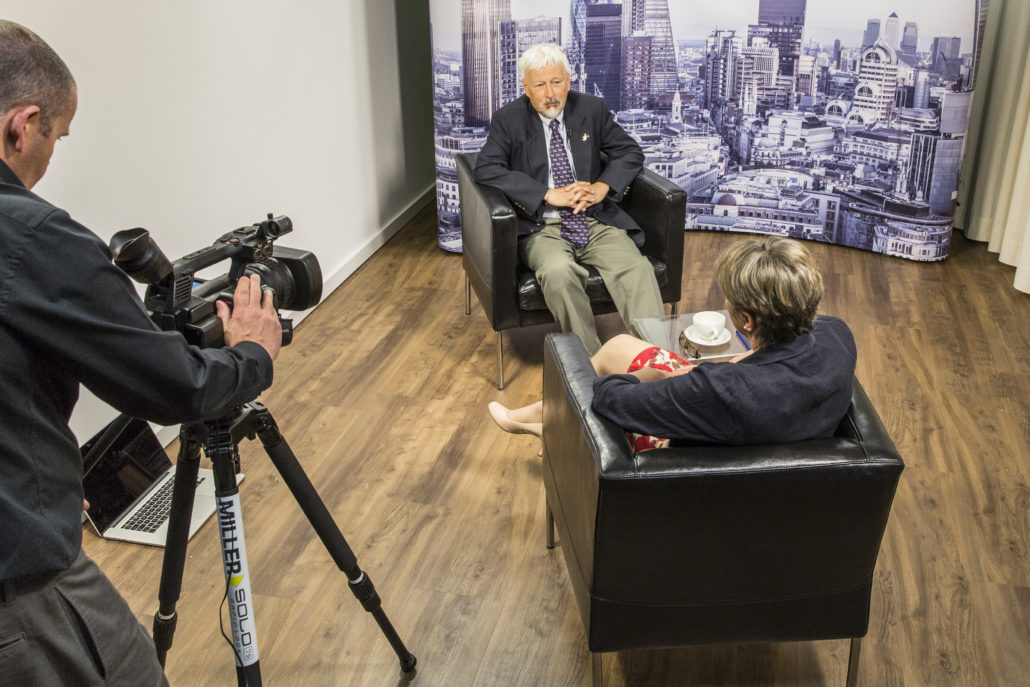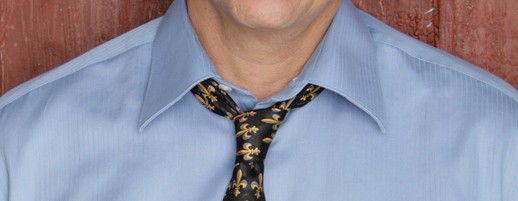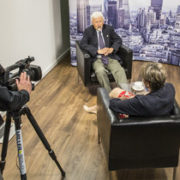10 tips: what to wear on TV
What to wear on TV: is a question we are asked all the time.
Back in November I wrote ten top tips for women and promised we would also provide ten top tips for men. Just to reiterate: as media trainers, we think what you are wearing is one of the least important things to worry about if you are doing a TV interview. But we aim to provide the information our clients want. So here goes.

Normal business wear is a good principle to follow when being interviewed on TV
What to wear on TV: normal business wear
- As with women, the overarching principle for professional people being interviewed on television is ‘normal business wear’. If you work for an NGO you will likely wear different clothes than someone running a funky design company. Whatever you would wear for work will probably work if you are being interviewed on TV.
- Even men sometimes need make-up. We do understand that most red-blooded men baulk at the idea of wearing make-up but if it’s offered by a TV station we suggest you don’t turn it down. Many man have what we might diplomatically call a very high hairline. This can present a problem for the cameraman: a shiny pate will bounce light like a mirror and be very distracting.
- Glasses on or off? The truth is it probably doesn’t matter. But it is not a good idea to take your glasses off just before an interview as you are likely to have an indent on the bridge of your nose which again, can be distracting. It is true that if you wear glasses on camera you can find studio or camera lighting is bouncing off the lenses and obscuring your eyes. However, this is the camera operators problem, not yours and they can easily adjust the shot to avoid the problem.
What to wear on TV: jacket and t-shirt
- For most of our clients, we would suggest men wear their jackets on camera. Ties are optional and really depend on the culture of the organisation you are representing. As with women, the jacket not only looks smart, covers any embarrassing underarm sweat marks but also gives the technicians somewhere to put the microphone.
- If you do wear a tie please, please check the knot is right at the top before the interview begins. Also, ensure the tie is hanging straight. Small misalignments can make a big difference to the image and it is easy to give the impression that you are overly informal or don’t care.

A small misalignment in your tie can quickly leave the wrong impression
What to wear on TV: think of your socks
- Give some thought to your socks! The vast majority of interviews are filmed as a ‘mid-shot’ which is the waist upwards or slightly higher. The problem is you may not know what the studio set is like and what shot they are planning to use. It is not something interviewees can have any influence over. If they put you on a low settee (think BBC Breakfast News) there is every chance your legs and socks will be in shot some of the time. If they are brightly coloured or worse too short you are again providing a big distraction to what you are saying. Three inches of hairy leg between sock and trouser bottom will be the main preoccupation of a third of your audience. I am aware that Jon Snow has been wearing highly coloured hugely distracting socks for a very long time but it is part of his brand and he is on our screens most nights which means there is no novelty value.
What to wear on TV: what colour?
- People often ask ‘what colours can I or should I wear? The truth is it makes very little difference these days so long as you don’t wear checks. 20 years ago camera technology struggled to cope with black, white, bright red etc. Today, black and white are best avoided if possible but only because they can be unflattering in harsh light. Softer colours are more flattering. Pink and blue shirts are considered preferable to white but again it is marginal. However, as with women, one important rule remains; don’t wear high contrast checks. If you do the picture will ‘strobe’ making it look as though you have recently been standing in a nuclear bunker. While this is not a crime, it is distracting.
- Check your hair. For women the most common problem is long hair falling across their eyes and either being distracting or being constantly flicked away which is also distracting. For men, this is less of a problem but the early morning cow’s lick is very common. It is often right on the crown of the head and not instantly seen when looking in the mirror but will show when you move your head around while speaking. It is not a crime but not ideal.
- Please do also consider your posture. Sit up straight, don’t loll and consider the BBC rule – bottom in back of chair. Leaning slightly forward means you look interested and caring.
- Finally, where you look during the interview is much more important than what you wear. Hold the eyeline with the interviewer as much as possible unless you are doing a ‘down the line’ in which case you will need to stare down the lens of the camera.
If you want to prepare for a television or radio interview why not book a session in our studio. We can realistically recreate the interview you are about to do and you can watch and critique your own performance as well as enjoying expert coaching. That means you are much more likely to get it right on the day.
What to wear on TV: other articles
Don’t just take our word for it. Here we share again an article about what to wear on TV.
We condensed it down to 10 top tips but here are 22 tips on what to wear for a TV interview.
- Media Savvy Operators Know How to Place a Quote - May 21, 2024
- The Magic of Performance - May 14, 2024
- Our Top Tips: - May 8, 2024



Leave a Reply
Want to join the discussion?Feel free to contribute!